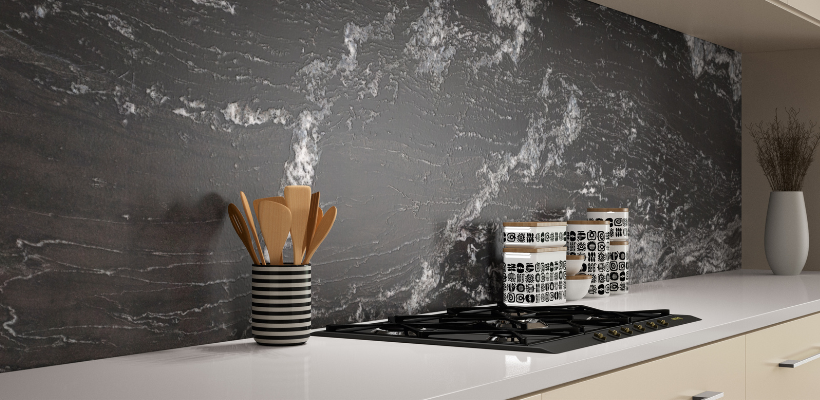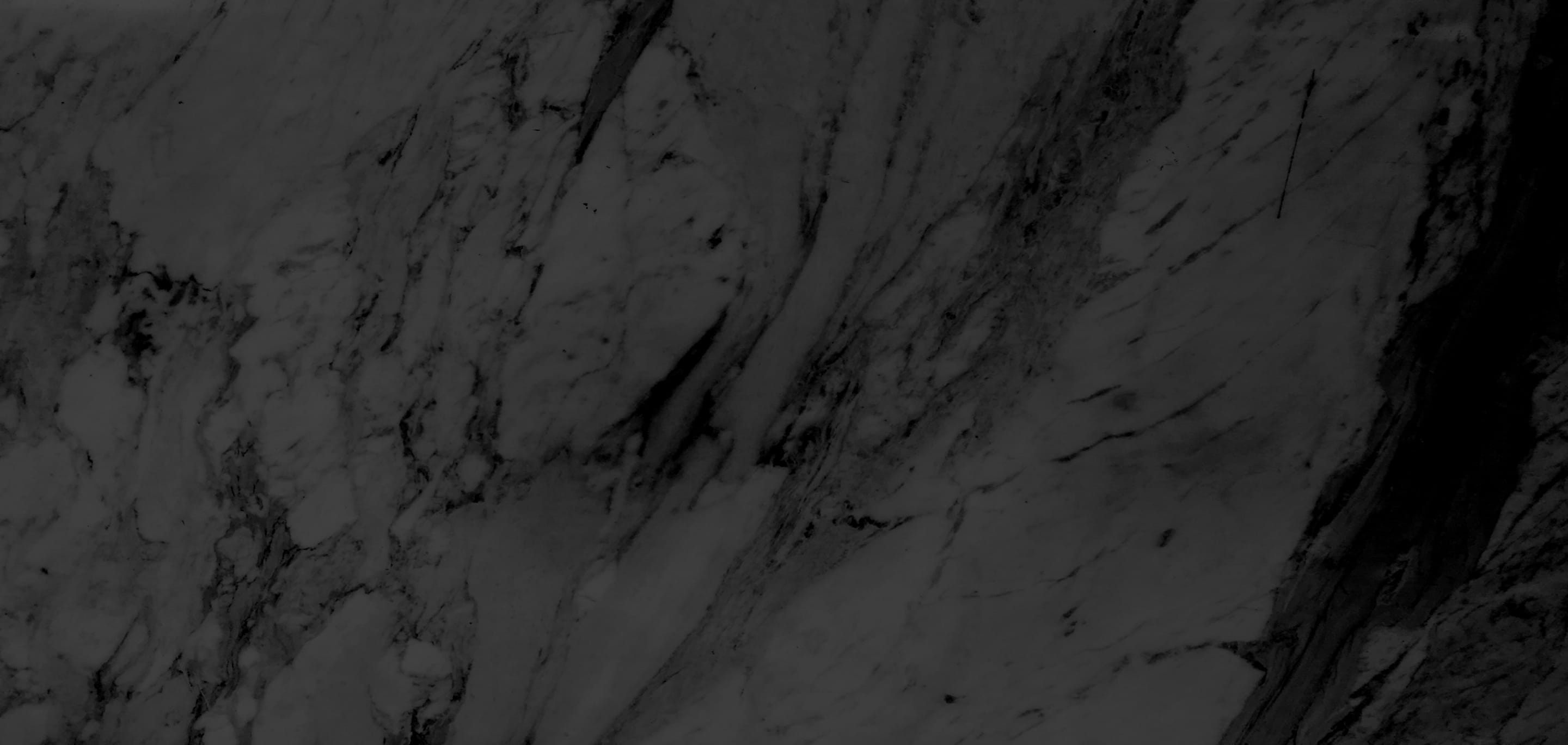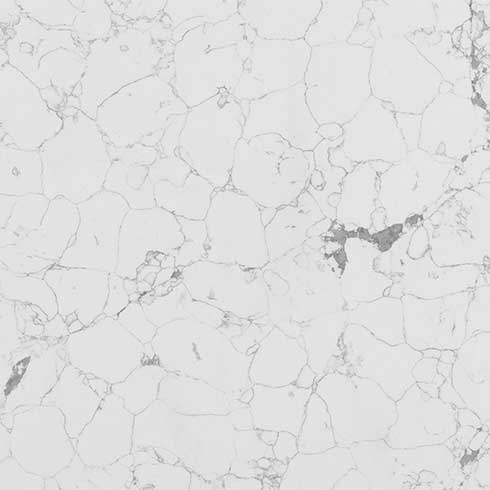Are you stuck with what splashback to have in your new kitchen? Or are you struggling to understand the differences between upstands and splashbacks? Upstands and splashbacks are two different types of kitchen features that are used to protect walls and surfaces from splashes and spills. In this blog, you will discover key differences between upstands and splashbacks, and the various types of splashbacks available.
What is the Difference between Upstands and Splashbacks?
An upstand is a small strip of stone that is installed onto the wall behind the countertop, usually at a height of around 100mm. Upstands are matched to the same colour/stone as the worktop. Splashbacks, as the name suggests, are there to help prevent any splashes of cooking oil hitting the wall. Splashabacks can vary in size, shape, colours and materials. One key difference between the two is their location. Upstands are located along the back edge of the worktop, raised to 100mm whereas splashbacks are usually installed onto the wall behind the hob.
A kitchen splashback will not only help protect the walls, but it also gives your home more personality and flare. It is essential to the design of your kitchen since it completes the appearance. As a result, it is crucial to take your time while selecting the ideal model.
As the primary function is practicality, you need to make sure you pick the correct materials. With so many distinct types to select from, splashbacks can be a beautiful decorative element in addition to having numerous functional advantages. This blog will discuss some of the main types of splashbacks along with our recommendations of materials. We recommend using only a few materials such as quartz, porcelain, glass, or ceramic/tiled. Granite is too heavy and thick for a splashback.
Types of Splashbacks
Full Height Splashbacks
A backsplash may unify your style and give your kitchen a high-end appearance. It may also lessen the requirement for frequent repainting. They extend the entire length of the worktop and provide the appearance of a seamless surface. As a result, they are constructed from the same substance as the worktop. These striking options give the kitchen a classy feel.
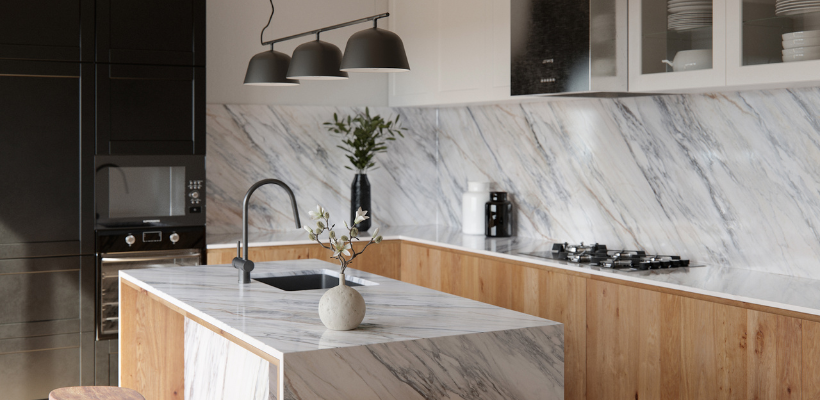
Bookmatched Splashbacks
Bookmatching is the process of aligning two or more stone slabs so that their linked surfaces are mirror images of one another. This property is unique to produced materials such as quartz and porcelain. Along with this quality, quartz offers several other benefits you should be aware of before making a purchase.
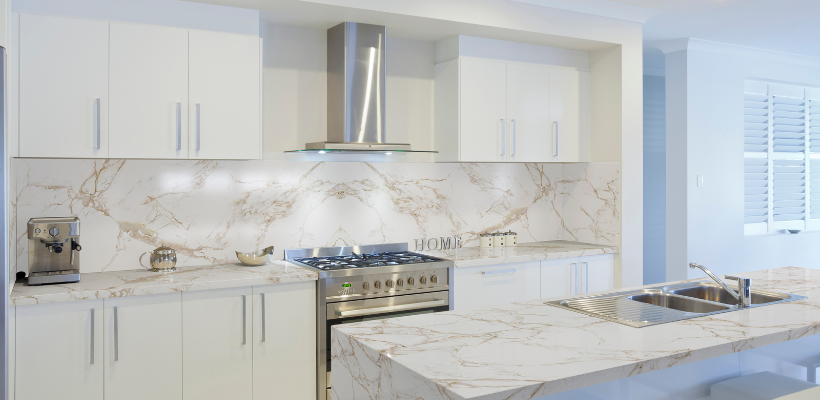
Contrasting Splashbacks
Combining bright and dark tones may create a stand-out element on a backboard. For a neutral colour scheme, use light cabinets with a deep blue surface behind a cooktop draws attention to the space., or the other way around!

Glass Splashbacks
Splashbacks made of toughened glass are quite popular since they are very simple to keep clean and available in a variety of styles, including textured glass, coloured glass, high gloss glass, and even transparent glass. Some individuals are using their creativity to build their own artistic splashbacks by selecting intricately printed wallpaper and laying a transparent glass on top.
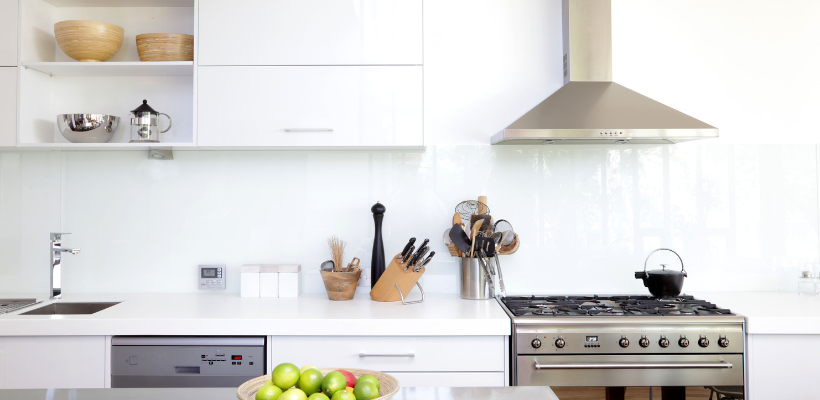
Stainless Steel Splashbacks
Using a stainless-steel sheet as a backsplash is a simple alternative; it is popular since you know it will be heat resistant and give your kitchen a professional, commercial feel. It will also go well with the kitchen sink options we have here.
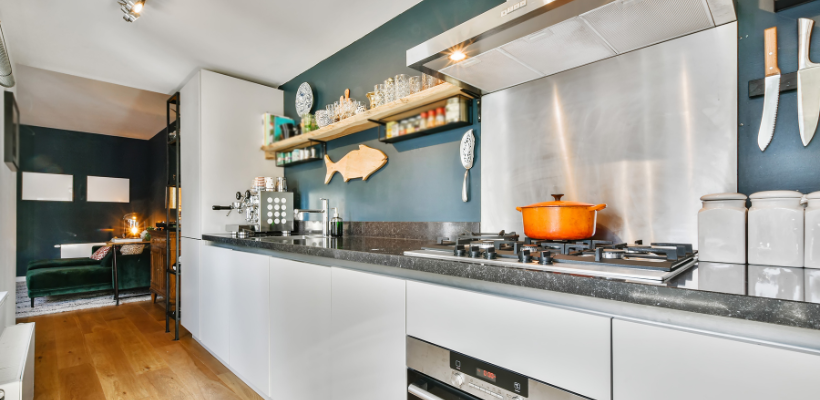
Thin Splashbacks
These types of splashbacks are characterised by their thin profile, meaning that they are not as thick as traditional splashbacks. They are typically made of materials such as glass, porcelain, or acrylic which are all durable and easy to clean. Thin splashbacks are available in a wide range of colours and styles, so you can choose one that matches your kitchen’s decor.
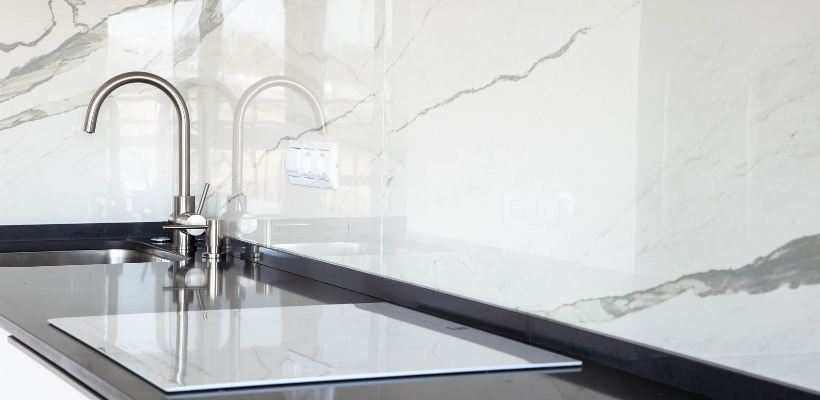
Splashback Trends
Ceramic/Tile
Splashbacks made of tile and ceramic are a traditional option for kitchen walls since they are sturdy and simple to maintain. They may also be personalised with a huge variety of colours, designs, and materials.
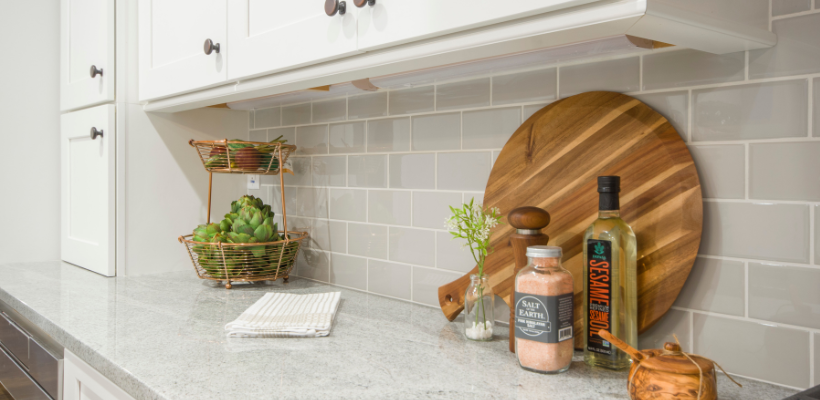
Mosaic
Mosaic splashbacks, which are created by arranging tiny individual tiles in a pattern, may give your kitchen a distinctive and creative feel.

High Rise/Full Height
Some people opt to have higher splashbacks than your standard 100mm. Splashes and spills can be more effectively contained by high rise splashbacks, which extend higher up the wall than conventional splashbacks. They may also produce an eye-catching element in your kitchen, especially if you select a daring or unusual material.
